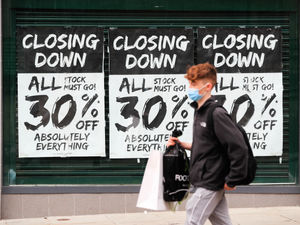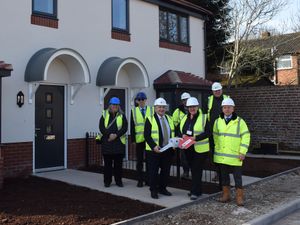Region's unemployment figures released as numbers in West Midlands rise
The rate of unemployment has risen again, official figures have shown.
The Office for National Statistics (ONS) said the rate of UK unemployment rose to 3.7 per cent in the three months to October, up from 3.6% in the previous quarter.
And, in the West Midlands, the unemployment rate also saw a rise. There were 143,000 out of work in the three months to October – 4.9 per cent of the working population, compared to 139,000 previously.
Across the region, the numbers claiming unemployment benefits, including Universal Credit, last month have also been released.
There was an increase from October across the West Midlands from 175,005 to 176,975, a rate of 4.8 per cent.
Walsall had 9,545 claimants (5.5 per cent) which was up from 9,450 last month.
Sandwell saw 13,540 people claiming (6.6 per cent), up 215 on last month while Dudley had 9,245 (4.8 per cent) which was up 30.
Wolverhampton saw a rise of 100 to 12,130 (7.4 per cent of people).
In Staffordshire, the claimant total was 14,535 (2.7 per cent), a rise of 170.
Lichfield had 1,520 claimants (2.4 per cent), up 40, and South Staffordshire had 1,710 (2.6 per cent), compared to 1,740 last month,
Cannock Chase had 2,045 claimants (3.2 percent), up five from last month, and Stafford had 2,050 claimants, compared to 2,040 from last month. Tamworth had 1,630 claimants.
Wyre Forest, including Kidderminster, saw 1,945 (3.3 per cent of people) making claims, which was up 20 on October. and, in Birmingham, the number was 61,390 (8.4 per cent of people).
Cathy Taylor, Employer and Partnerships Manager at Wolverhampton, said: “Jobcentres have had an extremely busy year, working hard, directly with employers to fill their vacancies with the right person.
"We’ve supported jobseekers to develop their skills, while also helping people to progress in their career.
“In particular we have held jobs fairs for business such as Magna, NHS, National Express, B&M, Premier Inn and Sector Based Work Academies for, NHS, Lloyds Banking Group.
“For the coming year, plans are already in hand to ramp up activity as there are still hundreds of vacancies available, especially in the key industries such as the Health & Social Care. Assisting the NHS and Trust In Care where we’re helping to recruit NHS 111 call handlers and care and support Workers. We are also offering future Sector-based Work Academy Programmes to fill future vacancies in the NHS for administration roles.
“The changes to Universal Credit and our 50PLUS offer means we can provide specialist help to even more claimants through intensive support, to help them get into work and seize opportunities to increase their job prospects and pay.
"There will be a 50+ focussed Care Event in the new year as well as a provider led event for customers to increase their awareness of training and support available tailored to their needs. Our DWP ‘Find a Job’ website, signposts people to jobs, where thousands of jobs are on offer.”
Nationally, data showed vacancies dropped by 65,000 in the three months to November to 1.9 million – the fifth quarterly fall in a row and the first annual fall since the beginning of last year.
The figures signalled that more people are choosing to return to work, with the inactivity rate falling to 21.5% as those in their 50s opt to go back to work at a time of rocketing costs.
The ONS said regular wages, excluding bonuses, rose by 6.1% in the three months to October – a record outside of the pandemic – as firms are under increasing pressure to increase earnings.
But wages continued to be outstripped by rising prices, falling by 3.9% after Consumer Prices Index inflation is taken into account.
Sam Beckett, ONS head of economic statistics, said: “This quarter the proportion of people neither working nor looking for a job fell, driven by a drop in the number of working-age people regarding themselves as retired.
“This tallies with other data which suggest more people in their 50s are thinking of going back to work, at a time when the cost of living is rising rapidly.
“With more people re-engaging with the labour market, there were more in employment and also more who were actively looking for a job. Though job vacancies are still at a very high level, they continue to fall and are now lower than they were a year ago.”





